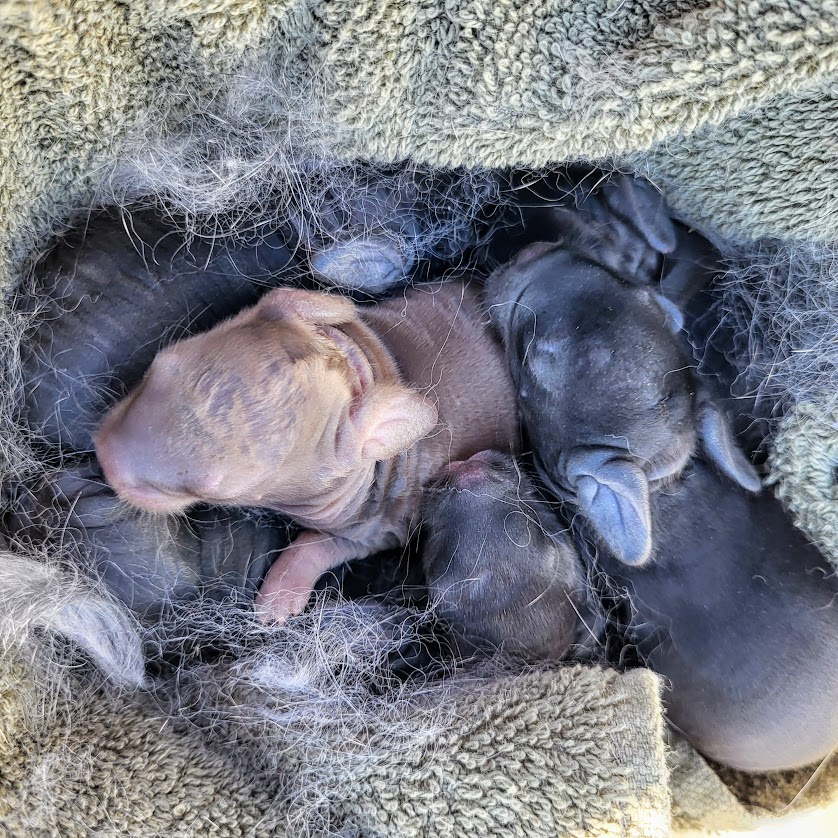Breeding Rabbits: The Successes and Failures of Our First Litter
We’ve all heard the phrase, “breeding like rabbits,” but we soon found out that it doesn’t always start out that way! We received our first 2 does when they were about 7 months old. Shortly thereafter, we purchased a 9 month old buck. We attempted breeding them about 6 weeks after that, and breeding did not go as easily as we thought it would. Simply putting the doe in with the buck did not work!
Breeding Rabbits: The “Blind Date” Method

After our initial failures, we did more research and decided to try a different approach. We took the doe out of her cage, draped a towel over her head to keep her calm, and put just her hind end into the bucks cage. This has been dubbed the “blind date” method of breeding rabbits. Although we still struggled a bit with this method, it worked much better than just putting the doe in with the buck. We believe we had successfully bred one of our does at this time. But, she died from unknown reasons about a week before her due date. A month after her death, we tried the “blind date” method again with our remaining doe and had great success. She kindled her litter on Tuesday, February 8th, 2022. I just happened to be doing animal chores at the time she was kindling and caught some of it on camera! She had 7 healthy tiny babies.


Taking Care of Kits: The First 3 Weeks

Our doe was a great mom. I checked the babies’ tummies every morning to make sure they were thriving and getting enough to eat. All was well, until they were about a week and a half old. One night we had lows around 20 degrees Fahrenheit. This also happened to be the first time the kits came out of their nest box overnight. While 3 kits were outside of the nest, one of them was too cold by the time we did animal chores and did not make it. We tried to warm it up, but it was too late. After that, I made extra effort to check the rabbit cage at first light to put any wandering kits back into the nest. For the next week and a half, I was having to return at least 1 kit to the nest each morning. By the time the kits were 3 weeks old, they were able to jump in and out of the nest box with ease. At this point, I was no longer as worried about them be stuck outside of the nest and freezing.



The Rabbit Tractor

In preparation for weaning the rabbits, we converted our chicken tractor into a rabbit tractor. All we did was zip tie 2×4 welded wire to the bottom. I was concerned the welded wire would be in the rabbits’ way when I moved the tractor. However, this was not an issue. I would highly recommend using the welded wire to keep the rabbits from digging out, and anything else from digging in (We did watch a fox visit the rabbit tractor one morning. He didn’t stay long and walked away on his own). We cut a hole in a plastic tote and put that in the tractor as den for the rabbits. The PVC pipes on either side are feeders for them. Last, we attached rabbit waterers to the hardware cloth.
Weaning the Kits
We moved the rabbits into the rabbit tractor starting when they were 5 weeks old. We moved a few rabbits at a day, spread out over 4 days. This was to help the doe’s milk supply slowly come down. Once we finished weaning, we bred our doe again, about 6 weeks postpartum.
As for the kits, they have been pulled all over our yard. They eat so much that we need to move them twice a day (once in the morning and once in the evening). Overall, this first litter has been a great experience. Soon, we will be ready to butcher these kits in order to make room for our next litter.

